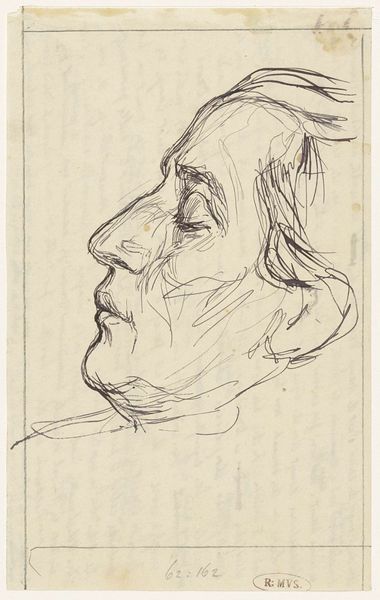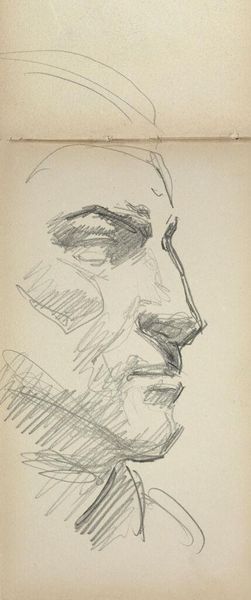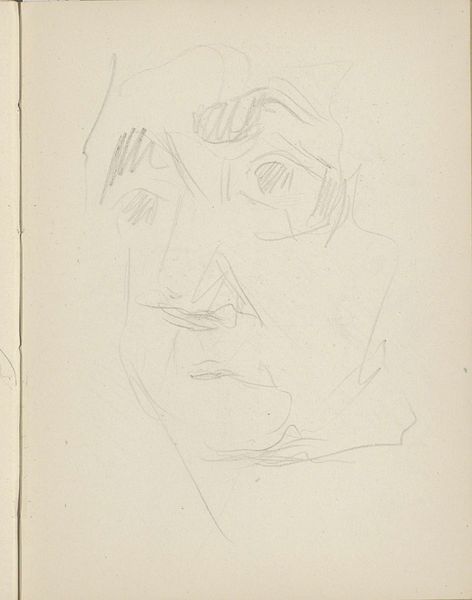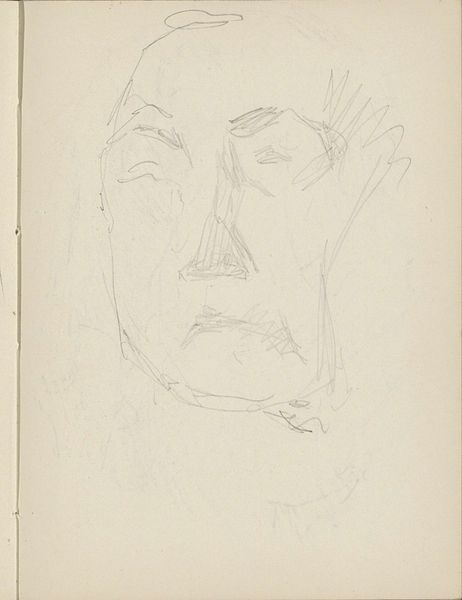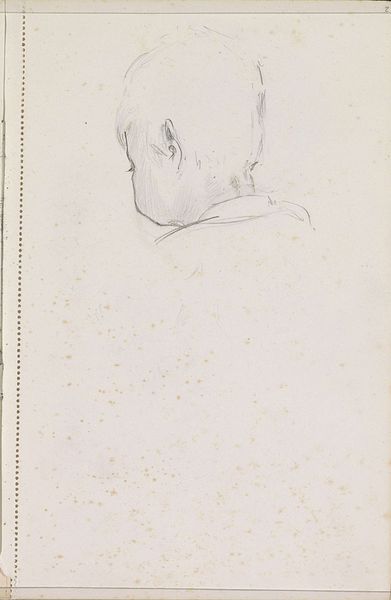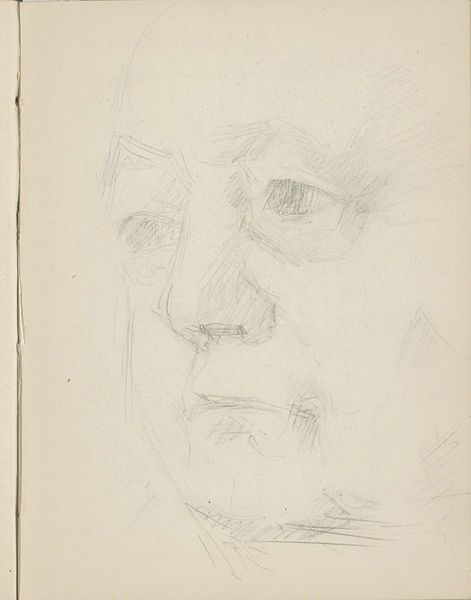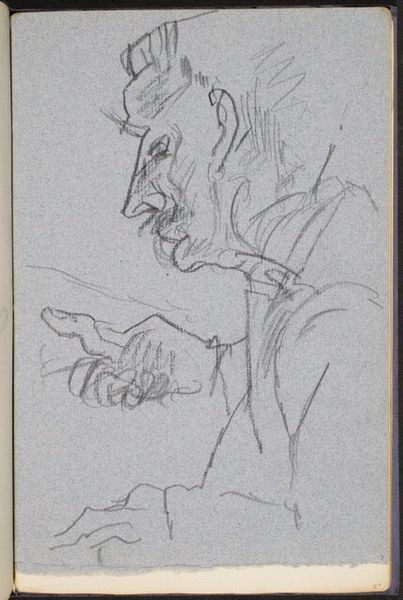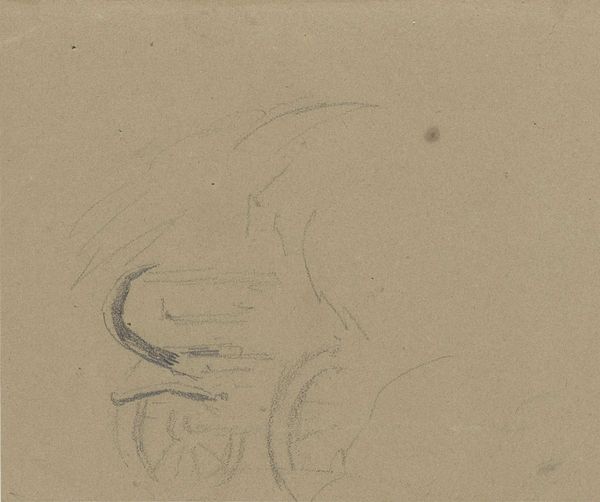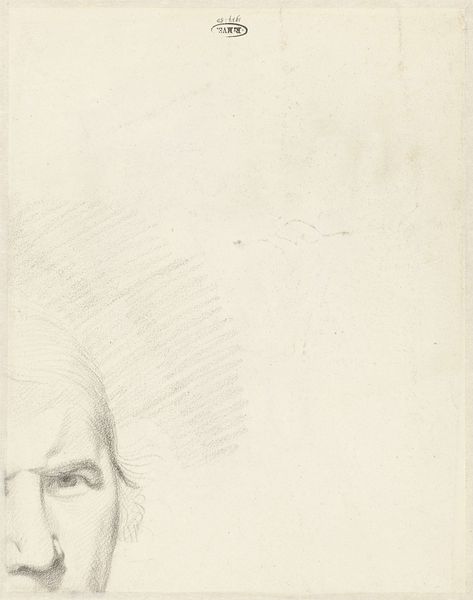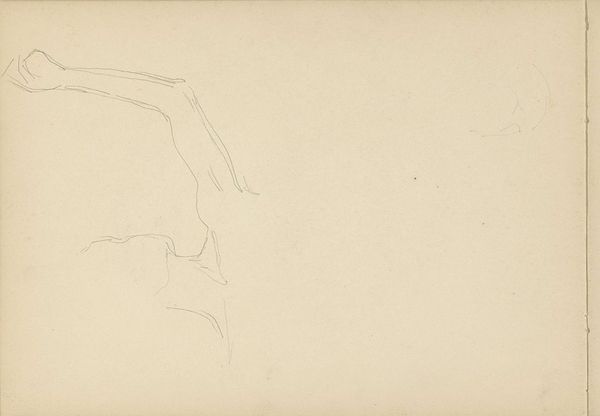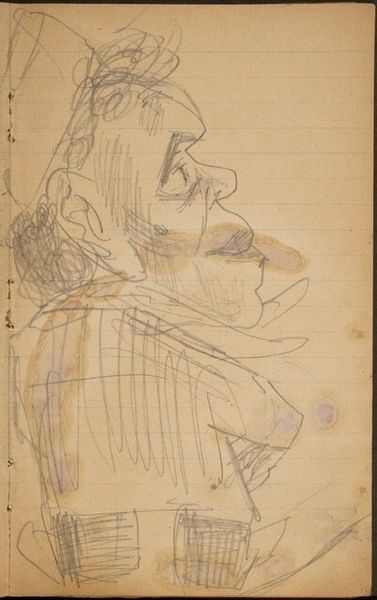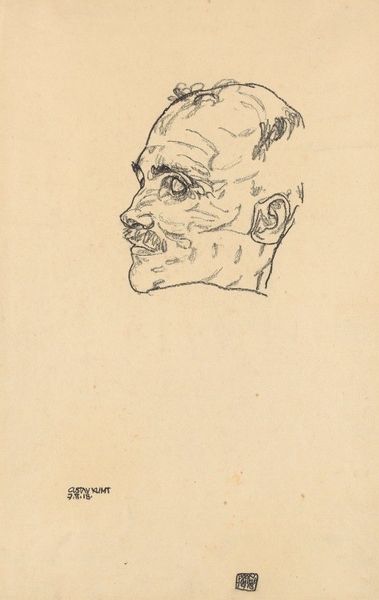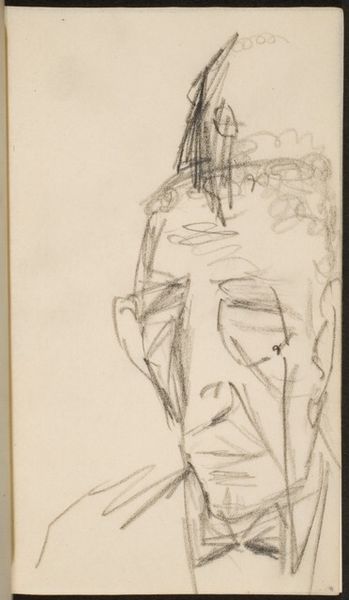
drawing, pencil
#
portrait
#
drawing
#
neoclacissism
#
pencil sketch
#
pencil
#
realism
Copyright: Public Domain: Artvee
Curator: We're looking at "Kopfstudie zu den Wandgemälden in der Hofburg," a pencil sketch executed around 1828 by Johann Peter Krafft. Editor: My immediate impression is one of quiet dignity. There's a distinct, almost stoic upward gaze suggested by the composition. Curator: Precisely. Note how Krafft meticulously captures the angle of the jawline, the gentle slope of the brow. The use of line suggests depth and the almost palpable texture of skin and hair. It's a masterful study in form, even as a preparatory work. Editor: The aquiline nose, the slightly open mouth—these all resonate with classical ideals of heroism and statesmanship. Knowing this was a study for murals within the Hofburg Palace, it is probable that Krafft was developing character studies that projected a particular aura of authority and virtue for imperial representation. Curator: Indeed, Krafft was working in the Neoclassical style. The essence of this piece resides in the contrast between the immediacy of the sketch and the idealized subject, achieved through subtle gradations in shading. Notice, too, how little he truly details; his emphasis lies solely in achieving anatomical and textural accuracy. Editor: Consider the enduring power of the profile—especially a strong profile like this. Throughout art history, it has symbolized power, intellect, and vision. The slight upward tilt intensifies the sense of aspiration, or even perhaps of defiance against a given horizon. It is fascinating how quickly the human mind ascribes a certain set of character attributes from the set of aesthetic choices here. Curator: The sparse detail encourages contemplation of pure form. It's a superb demonstration of economy and the ability to achieve powerful representational results from minimal artistic means. Editor: Thinking about how the original mural would situate the finished rendering of this man allows us to consider this solitary, somewhat haunting drawing, not just as a fragment, but as part of the historical and symbolic narratives about imperial legacy and power in early 19th-century Vienna.
Comments
No comments
Be the first to comment and join the conversation on the ultimate creative platform.
